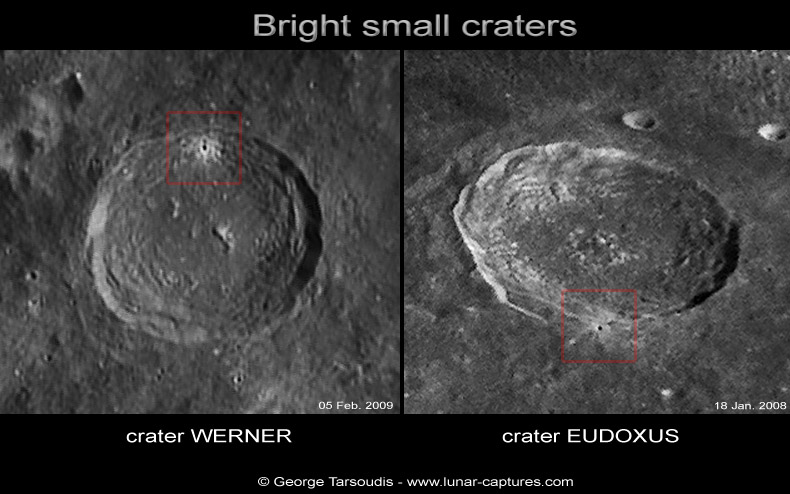Difference between revisions of "March 8, 2009"
| Line 15: | Line 15: | ||
Rükl plates [http://the-moon.wikispaces.com/Rukl+13 13] and [http://the-moon.wikispaces.com/Rukl+55 55]<br /> | Rükl plates [http://the-moon.wikispaces.com/Rukl+13 13] and [http://the-moon.wikispaces.com/Rukl+55 55]<br /> | ||
<br /> | <br /> | ||
| + | <p><b>Yesterday's LPOD:</b> [[March 7, 2009|The Beetle]] </p> | ||
| + | <p><b>Tomorrow's LPOD:</b> [[March 9, 2009|The Missing North Pole]] </p> | ||
<hr /> | <hr /> | ||
Revision as of 23:24, 4 February 2015
Siblings with Pimples

image by George Tarsoudis, Greece
When formed, most craters have a predictable morphology of either a small simple bowl shape or a large terraced-walled, flat-floored and central-peaked complex pattern - think Tycho. The transition between the two is what I call slump-wall craters and they too have a general similarity, but with more irregularity. George was attracted to these look alike craters because each has a small bright simple crater on its rim. But I see them as examples of slump-wall craters. Eudoxus is 67 km in diameter and about 4.3 km deep and Werner is 70 km wide and 4.2 km deep. These craters have some bits of terraced walls, where an entire section of the wall slid part way down as a unit, but the wall is more dominated by slumps. These are made when parts of the wall collapse and move downhill like an avalanche, and then pile up into curved mounds at the edge of the floor. Slump-wall craters don't have massive central mountains, but unique collections of small scattered hills. Werner has two small clumps of off-center hills - often a characteristic of such craters. The peaks in Eudoxus are centered but they are small and arranged in a circle - a rocky version of a lantana flower. We don't have good explanations for the variations of central peaks in slump craters - the differences make craters unique.
Chuck Wood
Technical Details
See image for limited info.
Related Links
Rükl plates 13 and 55
Yesterday's LPOD: The Beetle
Tomorrow's LPOD: The Missing North Pole



